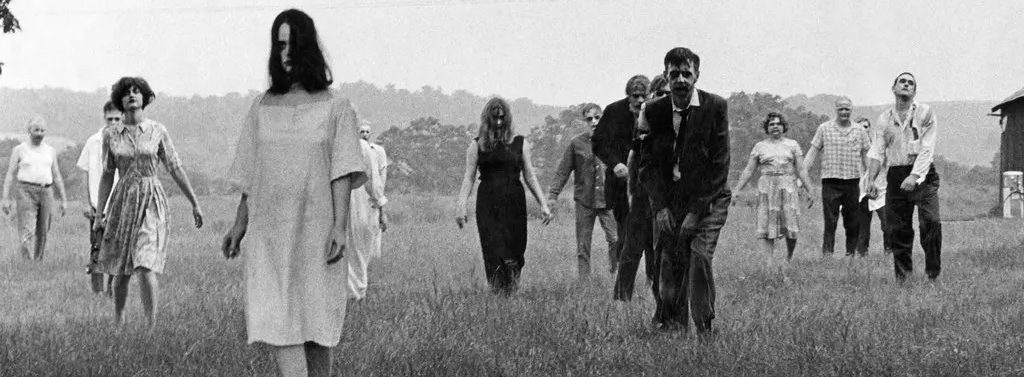Paper #1
This paper should be 1,200-1,400 words and is due as noted on the schedule. Be sure that you have an interpretive argument to make, a thesis about how the book or movie you’re examining communicates with an audience. Focus on details to make your points. The prompts are meant as constructive points of departure. You don’t need to answer every question posed by them, but do need to be sure that your building the case for a particular way of understanding the object of your study.
1) As we’ve discussed in class, sexual drives and transgressions often stand at the heart of horror, even when the references aren’t explicit. We might, for example, see violent predation, sadism, “forbidden” same-sex desire. Examine the connection between sexual desire and dread in one 1930s movie that we haven’t watched for class. Where does the movie seem to be tying fear or “monstrousness” to particular kinds of sexual appetites or habits? Don’t think only about plot development but about implications in gestures, shadows, and settings. You could look at, Frankenstien, The Bride of Frankenstein, Dracula, Mad Love, or King Kong to name a few examples.
2) Mark Jancovich suggests that monsters in 1950s horror movies, particularly those directed by Jack Arnold, worked less to terrify teenage audiences than to provide “point[s] of identification.” Audiences, says Jancovich, are “encouraged to identify with alternative lifeforms and lifestyles in a number of ways” (170). In this way, he seems to be suggesting that the movies subvert more conventional values. Watch a 1950s monster movie that we haven’t discussed in class. Do you think Jancovich has it right? What is the relationship created between the monster and the audience? How does the film work to establish it? Is that relationship purely sympathetic, grounded in fear, or something else entirely? Again, pay attention not just to the plot line, but the way particular shots and scenes are constructed. If you focus on one of the movies Jancovich discusses, you should do more than simply repeat his points. In no case, should you focus on the original Creature from the Black Lagoon. The library holds The Blob (1958), Attack of the 50-Foot Woman (1958), and several monster movies from the Hammer studios. Many others are probably available in the library and definitely available online.
3) When we get to Peeping Tom next week, we’ll talk at length about how the camera, particularly in horror film, tends to look differently at women than men and also how male and female characters in the movies tend to have different kinds of vision. In Rebecca, how does the second Mrs. DeWinter see the world around her? What sorts of things does she look at? How reliable is her vision? How is it different from Max’s sight? Do they see Jasper the same way? The mansion? The portraits? Does the camera look at Max in the same way that it looks at his second wife? What are the cumulative effects of these different ways of looking and seeing?
4) The most celebrated film adaptation of Henry James’s The Turn of the Screw is The Innocents (1961). How would you characterize the adaptation? What has the film changed and what has it preserved? How does it treat the question of ghostly presence? Again, you should think not just about what “happens” in the story but the change in medium. How has the movie framed and visualized James’s story?
PAPER 2
Each of the prompts below asks you to watch a movie that we have not discussed in class, but to rely on what we have discussed and read as you consider the film.
The essay should be about 5 pages (1,200-1,3– words) and is due as noted on the schedule.
1) Watch one of these movies: Halloween, Nightmare on Elm Street, Friday the 13th, or Scream. How does the movie you watched seem to fit with, resist, or modify ideas about the “slasher” movie that we have read about and discussed. You might think about ways that it addresses some of the questions about gender, family arrangements, or generational difference at the heart of slasher movies. You might think in broader terms about the nature of your particular movie’s apocalyptic vision of the United States—if, indeed, such a vision is present. You should also, of course, think about inherited and changing filmic techniques and lines of influence.
2) How does one of George Romero’s later Dead movies revise, revisit, or echo Night of the Living Dead? What has changed about the vision of American culture in the later movie? How have the zombies changed, if at all? What about the non-zombies? Again, the questions asked in the topic above about the slasher movie might apply to the zombie film. How do the meanings, suggestions, and modes of filming the zombie change in two specific examples over time? Work with either Romero’s Dawn of the Dead or Day of the Dead if you pursue this topic.
3) Thinking of William Paul’s ideas about “Dirty Discourse,” watch Evil Dead II or Dead Alive, two of the better known “gross-out” horror/comedies of the 1980s and 90s. Do you think that Paul’s theories about this group of movies, the body, and the “low” work for whichever one of these films you watch? What does the movie celebrate? What does the movie attack? How does it understand the human body? How do particular shots and visual images work toward the movie’s ends? For a more recent version of this kind of movie, you might choose Shaun of the Dead.
